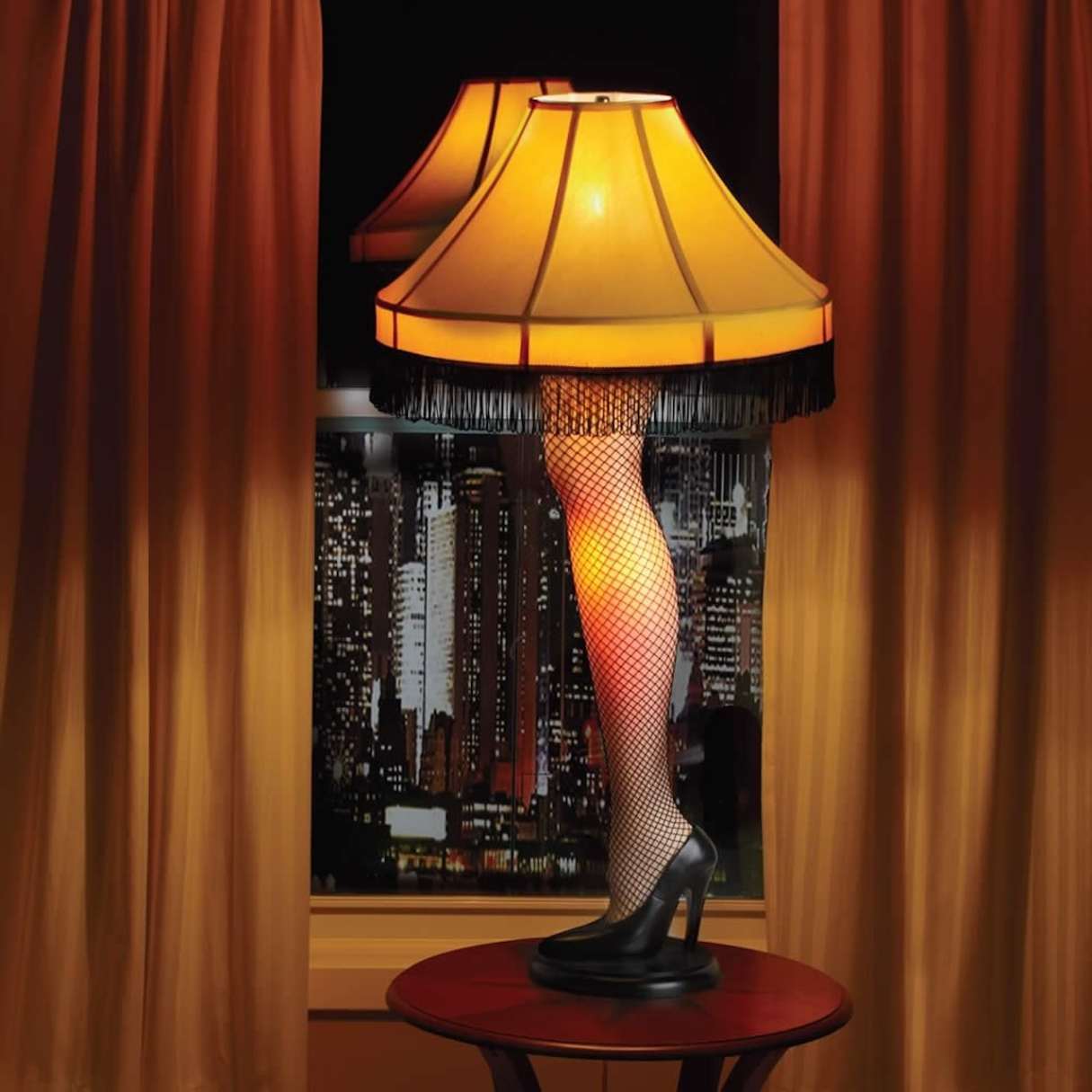

Furniture
Where Was The Gas Lamp Invented
Modified: August 22, 2024
Discover the fascinating history of the gas lamp and its invention. Learn where this revolutionary piece of furniture was first created and how it transformed the world.
(Many of the links in this article redirect to a specific reviewed product. Your purchase of these products through affiliate links helps to generate commission for Storables.com, at no extra cost. Learn more)
Introduction
The invention of the gas lamp revolutionized the way we illuminate our surroundings. Before the advent of gas lighting, various methods were employed to light up homes, streets, and public spaces. From candles to oil lamps, these methods provided limited and often dim illumination. The birth of the gas lamp brought about a new era of brighter and more efficient lighting.
In this article, we will delve into the fascinating history of the gas lamp, exploring its early beginnings, the inventor behind its creation, and its impact on society. Join us on this illuminating journey as we uncover the story behind one of the most important inventions in the field of lighting.
Image source: Unsplash
Key Takeaways:
- The gas lamp, invented by William Murdoch, revolutionized lighting, improving safety, urban development, and culture. Its impact paved the way for modern lighting technologies despite being eventually replaced by electric lighting.
- Gas lighting’s legacy extends beyond its eventual replacement by electric lighting, as it significantly impacted safety, urban development, technology, society, and culture. The gas lamp remains a key milestone in the history of lighting.
Read more: What Is A Gas Lamp
Early Lighting Methods
Long before the invention of the gas lamp, humans relied on various primitive lighting methods to navigate through the darkness. One of the earliest forms of lighting was the use of primitive torches made from wooden sticks soaked in animal fats. These torches provided a flickering and smoky light, but they were not very efficient or long-lasting.
As societies evolved, so did their lighting methods. In ancient civilizations, such as Egypt and Greece, the use of oil lamps became prevalent. These lamps were made of clay or metal and contained a wick soaked in oil. When lit, the oil would fuel the flame, providing a somewhat brighter and more consistent light source compared to torches.
Throughout history, candles also played a significant role in lighting. Made from various materials such as beeswax or tallow, candles were a portable and relatively inexpensive lighting solution. However, they were still limited in terms of brightness and duration.
These early lighting methods were not ideal for illuminating large areas, such as streets or public spaces. They were also prone to causing fires and had to be constantly monitored. As urban areas grew and the need for brighter, safer, and more efficient lighting arose, a new invention emerged – the gas lamp.
The Predecessors of the Gas Lamp
The invention of the gas lamp did not happen overnight. It was a result of centuries of experimentation and improvements upon existing lighting technologies. Before the gas lamp came into existence, several precursors paved the way for its development.
One notable predecessor of the gas lamp was the “spirit lamp,” which gained popularity in the 18th century. Spirit lamps utilized alcohol as a fuel source and produced a relatively brighter and cleaner flame compared to oil lamps or candles.
Another significant precursor was the “argand lamp,” invented by Swiss scientist Ami Argand in the late 18th century. The argand lamp featured a cylindrical wick surrounded by a glass chimney, allowing for better airflow and increased brightness. This design improvement made the argand lamp significantly more efficient than its predecessors.
Furthermore, the use of coal gas for lighting purposes was experimented with in the early 19th century. Coal gas was obtained by heating coal in an airtight chamber, which produced a flammable gas that could be used as a fuel. It was initially used for street lighting in some cities but proved to be a dangerous and unreliable method.
All of these advancements and experiments laid the foundation for the development of the gas lamp. The quest for a safer and more efficient lighting solution continued, leading to the invention that would revolutionize the way we illuminate our world.
The Invention of the Gas Lamp
The credit for inventing the gas lamp goes to William Murdoch, a Scottish engineer and inventor. Murdoch, an employee of the firm Boulton and Watt, made significant contributions to the development of steam engines and other industrial machinery. However, it was his work on gas lighting that would earn him his place in history.
In 1792, Murdoch successfully demonstrated the first practical application of gas lighting. He achieved this by using coal gas to illuminate the exterior of the Boulton and Watt factory in Birmingham, England. The gas was produced by heating coal in a retort, and the resulting gas was piped to a series of burners located throughout the factory grounds.
Murdoch’s successful experiment proved that gas could be a viable and efficient alternative to traditional lighting methods. His invention sparked immense interest and opened up new possibilities for lighting streets, buildings, and public spaces.
It is worth noting that while Murdoch is credited with the invention of the gas lamp, there were other inventors and scientists working on similar ideas around the same time, such as Philippe Lebon in France. However, Murdoch’s work was particularly noteworthy due to its practicality and successful implementation.
Image source: Unsplash
The gas lamp was invented in the early 19th century by William Murdoch, a Scottish engineer and inventor. He demonstrated the first gas light in 1792.
Popularization and Spread of Gas Lighting
Following William Murdoch’s successful demonstration of gas lighting, the technology quickly gained popularity and began to spread across the globe. The advantages of gas lighting, such as its brightness and reliability, made it a highly sought-after solution for illuminating streets, businesses, and homes.
One of the early adopters of gas lighting was the city of London. In 1807, the first public gas company, the Gas Light and Coke Company, was established, and its gas lamps began to line the streets of the city. The success of gas lighting in London paved the way for its adoption in other major cities around the world.
As gas lighting gained momentum, improvements in the technology were made to enhance its efficiency and safety. Innovations such as the gas meter, which allowed for accurate measurement and billing, and the introduction of gas mantles, which significantly increased the brightness of the gas flame, further propelled the popularity of gas lighting.
The spread of gas lighting also coincided with the industrial revolution, as cities experienced rapid urbanization and the need for reliable and effective lighting became crucial. Factories, mills, and other industrial establishments embraced gas lighting to improve productivity and ensure a safe working environment.
In addition to its practical applications, the aesthetic appeal of gas lighting contributed to its popularity. Gas lamps exuded a warm and inviting glow, significantly enhancing the ambience of streets, parks, and public buildings. Gas-lit chandeliers and sconces adorned grand halls and luxurious residences, adding an element of elegance and sophistication.
By the mid-19th century, gas lighting had become the dominant form of public and residential lighting in many cities. The gas industry boomed, with numerous companies supplying gas to meet the increasing demand. Gasworks were established across countries, producing and distributing gas to power the growing number of gas lamps.
Image source: Unsplash
Read more: Who Invented The Electric Lamp
Impact and Legacy of the Gas Lamp
The invention and widespread adoption of the gas lamp had a profound impact on society, transforming the way we live, work, and socialize. Let’s explore the significant impacts and lasting legacy of this revolutionary lighting technology.
Improved Safety: Gas lighting provided a safer alternative to earlier lighting methods such as candles and oil lamps. The controlled and enclosed flame of the gas lamp reduced the risk of fire hazards, making streets, buildings, and homes significantly safer places to be.
Enhanced Urban Development: The availability of efficient and reliable gas lighting played a crucial role in urban development. Well-lit streets and public spaces encouraged nighttime activities, boosting commerce and social interactions. Gas lighting also facilitated the growth of urban infrastructure, as it allowed cities to expand and function efficiently during all hours of the day and night.
Technological Progress: The development of gas lighting technology spurred advancements in related fields. The gas industry saw significant growth, leading to innovations in gas production, distribution, and metering. This laid the groundwork for the later spread of other gas-powered technologies, such as gas stoves and heaters.
Social and Cultural Impact: Gas lighting impacted social and cultural life in various ways. It extended the hours of activity and entertainment, allowing people to enjoy evenings out and participate in cultural events after dark. The improved visibility of streets and public spaces also enhanced safety and influenced public behavior, promoting a sense of civic pride and community engagement.
Architectural Influence: The introduction of gas lighting influenced architectural design. Buildings began to incorporate gas lamps into their facades, showcasing exquisite ornamental designs. Gas-lit chandeliers and fixtures became symbols of luxury and grandeur, adorning the interiors of grand buildings, theaters, and homes.
Transition to Electric Lighting: While gas lighting reigned supreme for a significant period, it eventually gave way to the advent of electric lighting. In the late 19th and early 20th centuries, electricity became increasingly accessible, and electric lamps started to replace gas lamps. However, the gas lamp’s legacy continued, as it laid the foundation for the development and acceptance of modern lighting technologies.
The gas lamp will forever be remembered as a key milestone in the history of lighting. Its impact on safety, urban development, technology, society, and culture is a testament to the transformative power of innovation.
Image source: Unsplash
Conclusion
The invention of the gas lamp revolutionized the way we illuminate our surroundings, providing a brighter, safer, and more efficient lighting solution. From its humble beginnings as an experiment by William Murdoch to its widespread adoption in cities around the world, the gas lamp left an indelible mark on society.
Early lighting methods, such as torches, oil lamps, and candles, were limited in their brightness and duration. The gas lamp, with its controlled and enclosed flame fueled by coal gas, provided a significant improvement in both the quality and reliability of lighting. It paved the way for the popularization and spread of gas lighting in streets, buildings, factories, and homes.
The impact of the gas lamp was far-reaching. It improved safety, reducing the risk of fire hazards. It enhanced urban development by extending the hours of activity, boosting commerce, and encouraging social interactions. The technological progress in gas production, distribution, and metering spurred by gas lighting laid the foundation for future advancements.
Socially and culturally, gas lighting influenced public behavior and fostered a sense of community engagement. It played a role in architectural design, with the incorporation of gas lamps into building facades and the use of gas-lit fixtures to enhance the aesthetics of spaces. Although electric lighting eventually replaced gas lighting, the gas lamp’s legacy continued as a stepping stone in the development of modern lighting technologies.
In conclusion, the gas lamp remains a significant invention in the history of lighting. Its contributions to safety, urban development, technology, and culture are undeniable. While its prominence may have faded over time, its impact on society and the continuing evolution of lighting is a testament to the importance of innovation and human ingenuity.
Image source: Unsplash
Curious about the nuts and bolts of gas lamps? After diving into the origins of these historical illuminators, why not continue your journey by delving into what exactly a gas lamp is? Understanding its components, functionality, and varieties will surely enlighten your knowledge further, making every shadowy corner a bit brighter.
Frequently Asked Questions about Where Was The Gas Lamp Invented
Was this page helpful?
At Storables.com, we guarantee accurate and reliable information. Our content, validated by Expert Board Contributors, is crafted following stringent Editorial Policies. We're committed to providing you with well-researched, expert-backed insights for all your informational needs.














